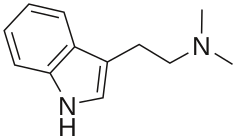| Part of a series on |
| Psychedelia |
|---|
 |
Psychedelic music (sometimes called psychedelia)[1] is a wide range of popular music styles and genres influenced by 1960s psychedelia, a subculture of people who used psychedelic drugs such as DMT, LSD, mescaline, and psilocybin mushrooms, to experience synesthesia and altered states of consciousness. Psychedelic music may also aim to enhance the experience of using these drugs and has been found to have a significant influence on psychedelic therapy.[2][3]
Psychedelia embraces visual art, movies, and literature, as well as music. Psychedelic music emerged during the 1960s among folk and rock bands in the United States and the United Kingdom, creating the subgenres of psychedelic folk, psychedelic rock, acid rock, and psychedelic pop before declining in the early 1970s. Numerous spiritual successors followed in the ensuing decades, including progressive rock, krautrock, and heavy metal. Since the 1970s, revivals have included psychedelic funk, neo-psychedelia, and stoner rock as well as psychedelic electronic music genres such as acid house, trance music, and new rave.
- ^ C. Heylin, The Act You've Known For All These Years: the Life, and Afterlife, of Sgt. Pepper (London: Canongate Books, 2007), ISBN 1-84195-955-3, p. 85.
- ^ "The Hidden Therapist—evidence for the central role of music in psychedelic therapy". wavepaths.com. Retrieved 2021-11-15.
- ^ Siebert, Amanda. "Wavepaths: The Neuroscientist-Founded Company Producing Music For—And As—Psychedelic Therapy". Forbes. Retrieved 2021-11-15.